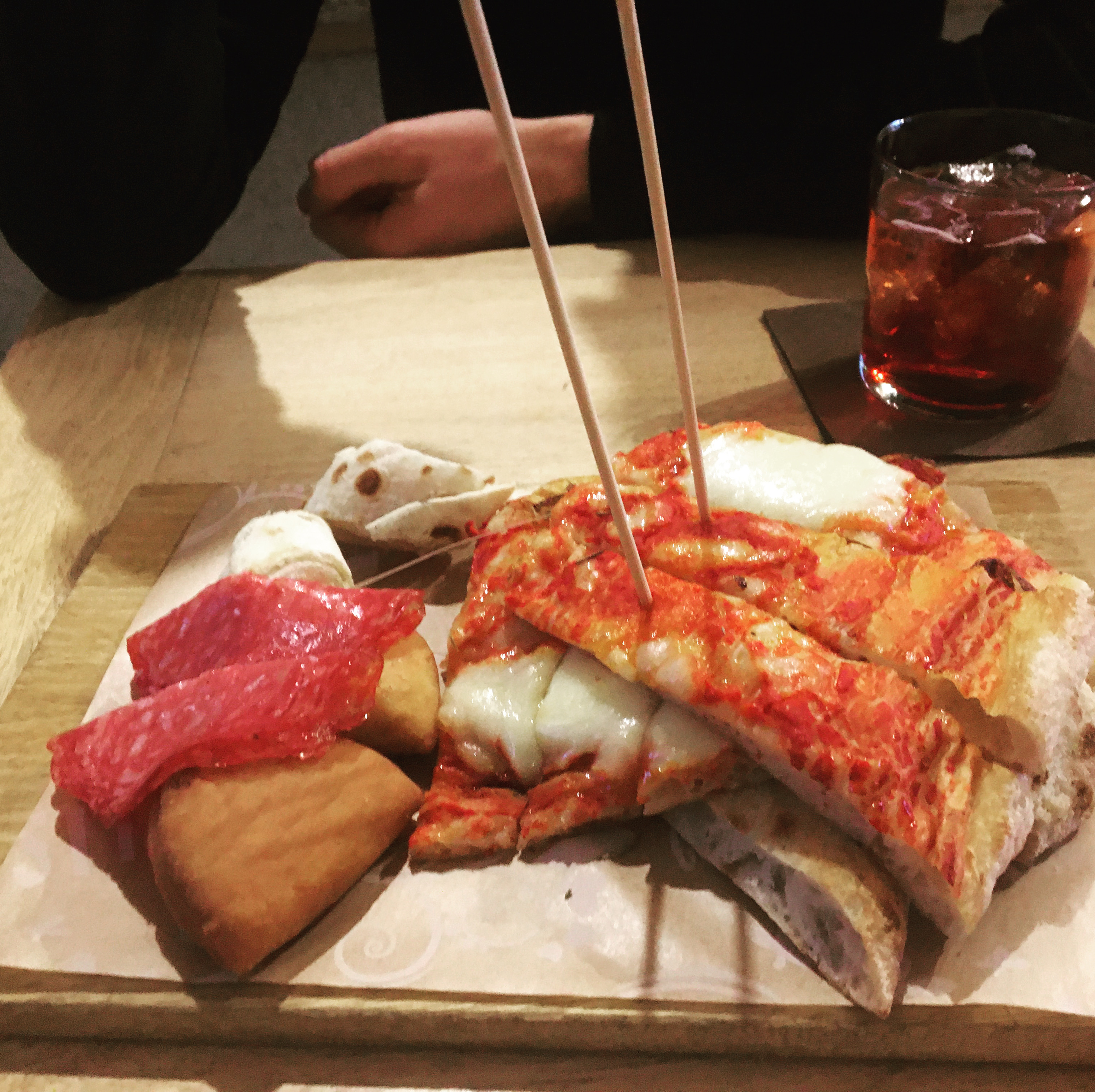
When Jesse and I first arrived in Italy, he took me to a bar owned by and connected to a shop where he used to sell clothes. It was full of people and life as they stood around a table piled with food. It was difficult to move around and get a spot ourselves. We sat outside and ordered glasses of wine then went one by one to fill our plates with different dishes. This is where I had my first Italian aperitivo.
The aperitivo is one of my favorite parts of living in Italy. Don’t get me wrong, I love the architecture, the landscapes, the language, etc. I love a lot about living in Italy. But I learned from my family, the Delgadillos that is, to explore new places through the different flavors I could put on my plate.
This started with childhood vacations and trying the different dishes on the menu at some of our favorite places and most notably the precedent set by my younger brother whose catchphrase was “Can I try some of that?”
Later, through other friends, I encountered a wider variety of foods. When I reached the point of economic independence, this evolved into a love for novelty in foods, drinks, and experiences.
I love those indulgent, earthly pleasures, and the Italian aperitivo is an excellent place to find them.
What is the Italian Aperitivo
The aperitivo is an aromatic cocktail such as:
- the Negroni,
- the Negroni sbagliato (an adaptation of the Negroni using Prosecco instead of Gin),
- Spritz,
- Bellini,
- Americano,
- and many more.
But with this cocktail, a bar will often give you salty foods to go alongside the drink. Bar and restaurants serve these dishes in different forms:
- small snacks like chips, olives, and/or nuts,
- a tray of meat, cheese, and/or focaccia and pizza,
- a buffet style where you can fill your plate with a section of dishes.
The aperitivo is designed to stimulate digestion. The term aperitivo comes from the Italian verb aprire [to open] or the Latin aperio [to open]. The aromatic, bitter drinks are intended to open the appetite before dinner.
Many attribute the origin of the aperitivo to Antonio Benedetto Carpano, a distiller out of Turin who created one of the first Vermouths in 1786. Vermouth is a common ingredient in the aperitivo cocktails and provides the aromatic, bitter flavor they are known for.
It is also, but less frequently, connected to an ancient Roman tradition gustatio, a first course composed of large amounts of salty snacks and high-alcohol-contend aromatic drinks—much like the aperitivo of today.
Challenges as a Plant-Based Eater
Since arriving in Italy, friends, family, and cameriere [servers] have always made a bit of fun of me for being vegetarian, vegan, and plant-based at different times. This becomes particularly challenging when meats and cheeses accompany the aperitivo. This became a clear problem when I made it the focus of my master’s thesis. But at the end of the day, the point is not only on the food but on the commensality, or experience of eating together.
This is precisely why I go: To meet with people I care about and share food with them. (Anthropologically speaking, sharing food helps forge and strengthen bonds.)
The Purpose of the Italian Aperitivo
Much like the French aperitif or the American happy hour, the aperitivo drives traffic into a restaurant or bar during hours where it would otherwise be empty. Since it is common for Italians to eat dinner late, this gives them plenty of time to go out and meet friends for an aperitivo between leaving the office and heading home.
For customers—Italians, foreign residents, or tourists, when they are allowed to enter the country—the aperitivo is a great way to meet up and catch up with friends, family, or coworkers in a casual environment with good food and good drinks.
I am not an expert on the history or the role of the aperitivo in Italian culture. I could not confidently tell you 100% of the purpose of Happy Hour in American culture. But I research the aperitivo for my thesis and asking Italian friends, family members, and restaurant owners about. I was surprised to not find any research that dealt directly with this, but this may have been answered by a conversation with an Italian woman at a friend’s birthday party in Milan who said the aperitivo is an everyday part of Italian life and there is nothing interesting about it to Italians.
(In anthropology, this would fall under the discussion of positionality. By her pointing out that I am paying particular attention to something that Italians would not usually think about, she is highlighting that I am not Italian.)

Jan 8, 2022 2:56 am
Great content! Keep up the good work!